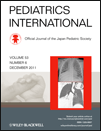Multiplex polymerase chain reaction for six herpesviruses after hematopoietic stem cell transplantation
Abstract
Background: Herpesviruses cause life-threatening diseases after hematopoietic stem cell transplantation (HSCT). It is necessary that viral diseases are identified early and safely diagnosed. The purpose of this study was to evaluate the efficacy of multiplex polymerase chain reaction (PCR) for qualitative detection of the six herpesviruses simultaneously: herpes simplex virus type 1 and type 2, varicella-zoster virus, cytomegalovirus, Epstein–Barr virus (EBV) and human herpesvirus 6B.
Methods: Multiplex PCR was applied to patients with various clinical manifestations including central nervous system, cutaneous and mucosal complications after allogeneic HSCT, and the data were retrospectively analyzed.
Results: Patients positive for cytomegalovirus in peripheral blood by multiplex PCR might need pre-emptive treatment, but a positive result for EBV had no specific correlation with EBV-associated post-transplant lymphoproliferative disease, and positive result for human herpesvirus 6B failed to show any clinical significance. The multiplex PCR was safe and helpful to diagnose viral diseases of local regions, for example, the central nervous system, skin and mucosa.
Conclusions: It may be worthwhile to survey the six herpesviruses with multiplex PCR after HSCT.




